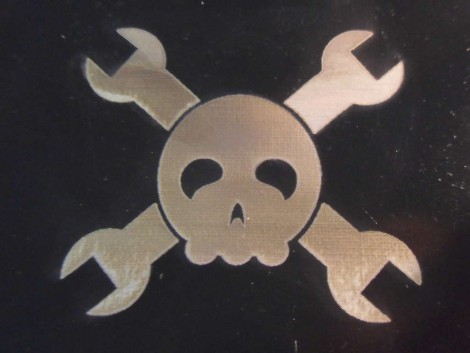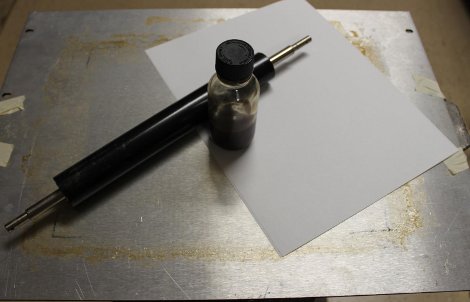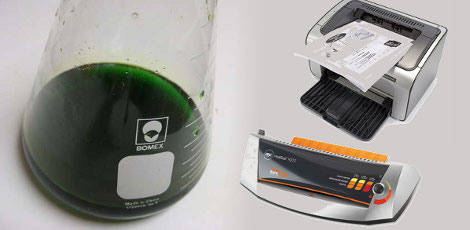
[James] has been refining a method of negatively etching metal with a laser. He had been using a product called Thermark which is designed for this process, but it’s quite expensive. He found that paint designed for wood stoves works just as well. To prepare the surface he bead blasted it and then cleaned of the residue and finger prints off with acetone. The board was preheated in an oven before covering it with the spray paint. He ran the laser at 98/100 power and 90/400 speed at a step size of 0.1mm to achieve the results above. This should immediately make you think about making circuit boards. We’d love to ditch the toner transfer and we’re always looking for one more reason to get a laser cutter.













